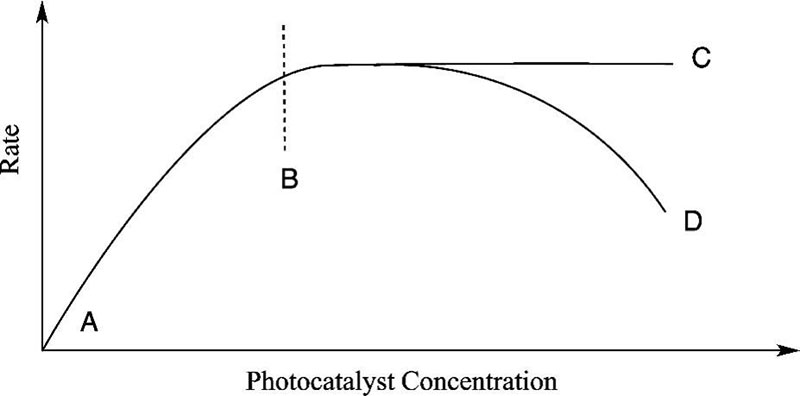In the activity evaluation system of photocatalytic water splitting, apart from apparent quantum yield and STH energy conversion efficiency, there is another simple parameter to evaluate the activity of photocatalysts for water splitting—hydrogen production rate (v, μmol·h-1 or mmol·h-1). In photocatalytic water splitting experiments, the hydrogen production rate refers to the amount of hydrogen produced per unit time, and the calculation formula is as follows:

In photocatalytic water splitting experiments, the quantity of H₂ is generally determined by gas chromatography. The data we obtain from gas chromatography is the peak area (μV·s), and the sole peak area has no practical meaning for quantification. At this point, we need to use a standard curve to quantitatively determine H₂ through the "external standard method". The standard curve is a trend line showing the change of chromatographic peak area with the volume/quantity of the substance to be measured. Therefore, before quantifying H₂, we need to first plot the standard curve.
Inject high-purity H₂ with a known volume V1 into the photocatalytic water splitting system, circulate it uniformly, and then perform sample injection detection. The peak area S1 can be obtained from the gas chromatography. Then, sequentially inject (V₂-V1), (V₃-V₂), (V₄-V₃), and (V₅-V₄) mL of high-purity H₂ into the photocatalytic water splitting system (cumulative injection), and obtain the peak areas S₂, S₃, S₄, and S₅, respectively. Plotting the original data points of the standard curve with H₂ volume as the horizontal axis and chromatographic peak area S as the vertical axis, and after linear fitting, the standard curve can be obtained. The fitting degree R2 of the standard curve should be greater than or equal to 0.999, as shown in Figure 1. In addition, the range of H₂ volume for data points on the standard curve should include the hydrogen production in the actual photocatalytic water splitting experiment, but the range should not be too wide, otherwise the chromatographic peak area will not be linear with H₂ volume.

Figure 1. Example of Standard Curve
Based on the standard curve, substitute the peak area obtained from the photocatalytic water splitting experiment to calculate the volume of H₂ produced in the photocatalytic water splitting reaction. Dividing the volume of H₂ by 22.4 L·mol-1, the amount of H₂ in the photocatalytic water splitting experiment can be obtained. Dividing the amount of H₂ by the reaction time will give the hydrogen production rate in the photocatalytic water splitting experiment. Have you learned it?
Generally, people are accustomed to normalize the obtained hydrogen production rate by mass (μmol·h-1·g-1 or mmol·h-1·g-1). However, in heterogeneous catalytic reaction systems, with the increase of catalyst concentration, due to the decrease of light penetration depth and the increase of scattered incident light, the reaction rate will reach a maximum and remain unchanged, or even decrease, as shown in Figure 2 B-C and B-D[1]. Therefore, for heterogeneous photocatalytic water splitting reactions, the hydrogen production rate should be expressed in μmol·h-1 or mmol·h-1 rather than μmol·h-1·g-1 or mmol·h-1·g-1 [2,3].

Figure 2. Effect of Catalyst Concentration on Reaction Rate[1]
[1] Horst Kisch*, On the problem of comparing rates or apparent quantum yields in heterogeneous photocatalysis[J]. Angewandte.Chemie. International. Edition. 2010, 49, 9588.
[2] Chen Shanshan, Vequizo Junie Jhon M., Domen Kazunari* et. al., Surface modifications of (ZnSe)0.5(CuGa2.5Se4.25)0.5 to promote photocatalytic Z-Scheme overall water splitting[J]. Journal of the American Chemical Society, 2021, 143, 10633.
[3] Ren Xiaohui, Weisongrui, Ye Jinhua* et. al., Rational construction of dual cobalt active species encapsulated by ultrathin carbon matrix from MOF for boosting photocatalytic H₂ generation, Applied Catalysis B: Environmental, 2021, 286, 119924.